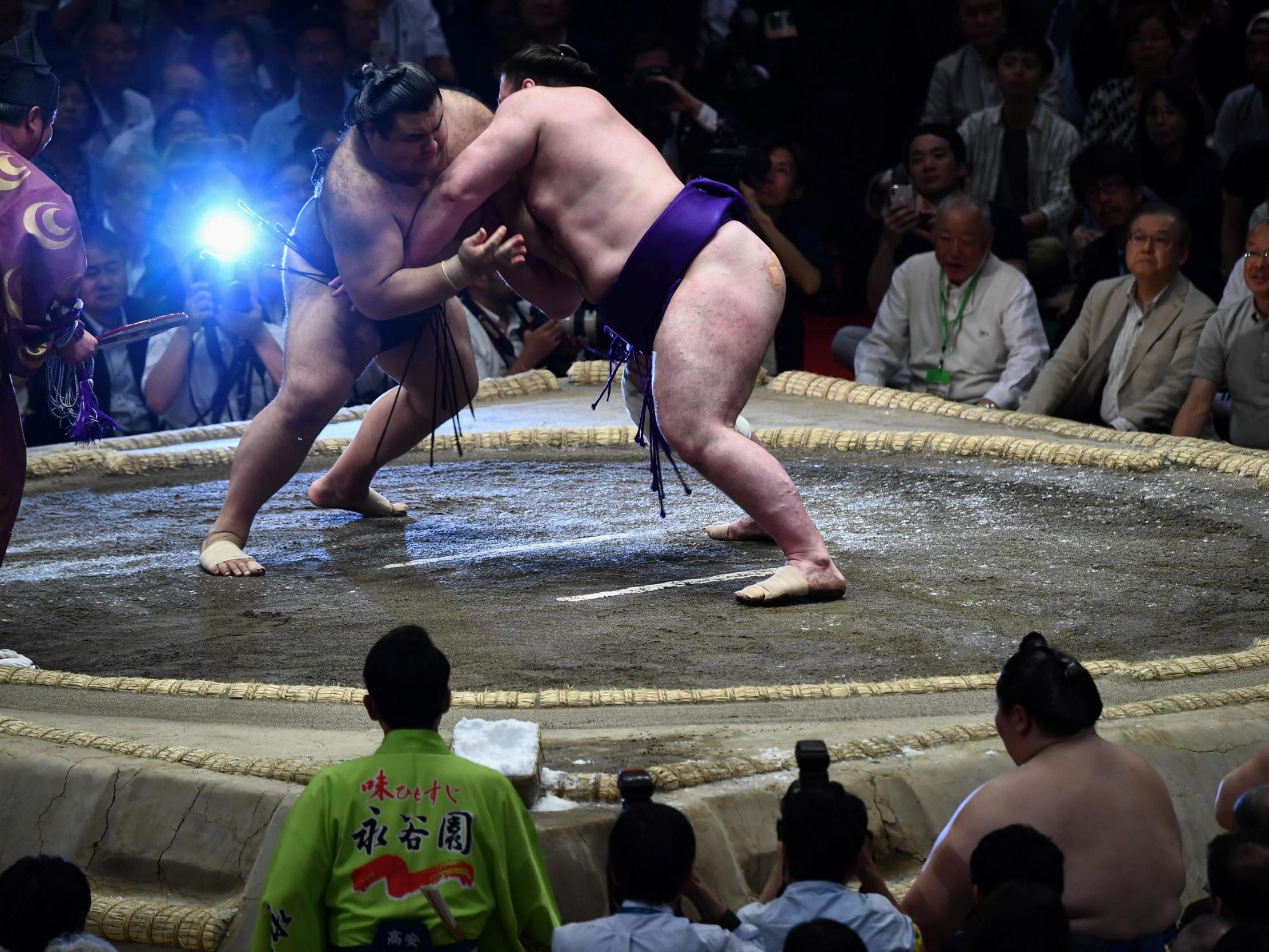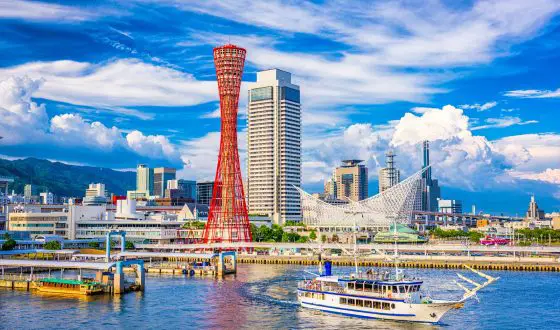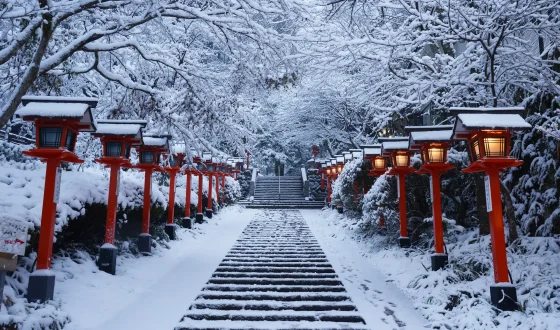Are Sumo Wrestlers Healthy? – The Answer May Surprise You
When seeing a sumo match for the first time, most people are amazed by the size of the wrestler. At least 300 pounds, sumo wrestlers are truly giants. So you may wonder do they suffer from obesity or in other words, are sumo wrestlers healthy? We will find out the answer in this location guide and dig deeper into the unique life of a sumo wrestler.
What is sumo wrestling?
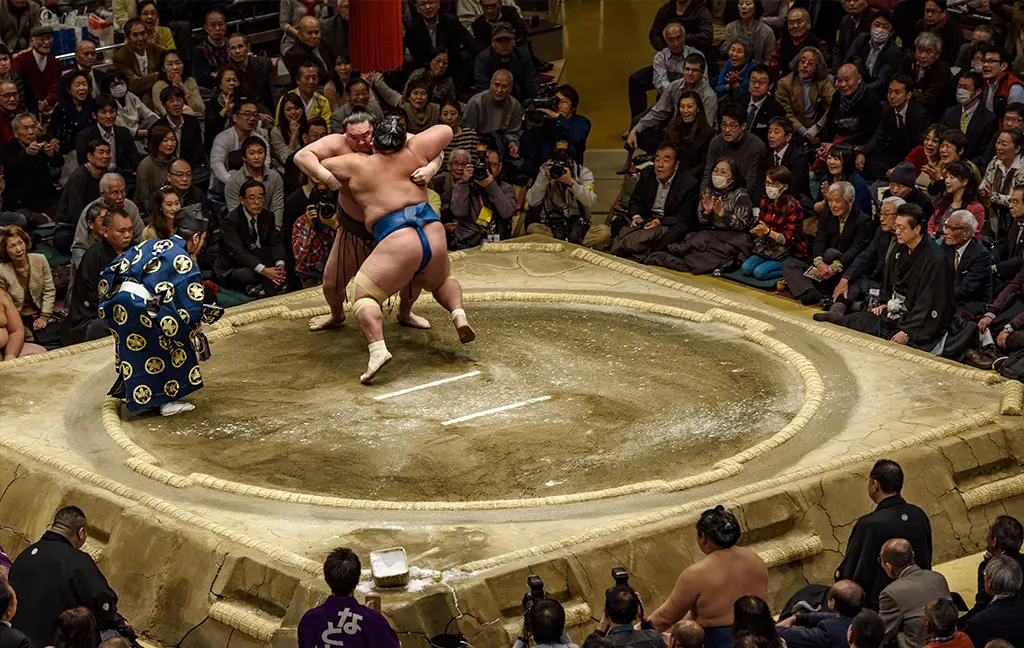
Sumo wrestling is a Japanese famous national sport.
SEE MORE:
- Where To Stay In Osaka? – Useful Tips For Foreigners
- The 15 Fun Things To Do In Ikebukuro On Your First Visit
Sumo was a traditional sport in Japan that dates back to the Edo period. That’s why Rikishi (sumo wrestlers) hair is usually tied in a topknot, a common hairstyle in the Edo. In sumo, two Rikishi wearing only a mawashi (belt or loincloth), compete with each other in a dohyo (circular ring). The winner is the one who manages to force his opponent to the floor (any part of the body but not the feet) or make him out of the ring. This can be done by pushing, pulling, or throwing but not fighting with closed fists or pulling of hair. Fun fact from the start of their wrestling career, sumo wrestlers normally move to a heya (stable), where they live, eat, exercise, drink, and do everything.
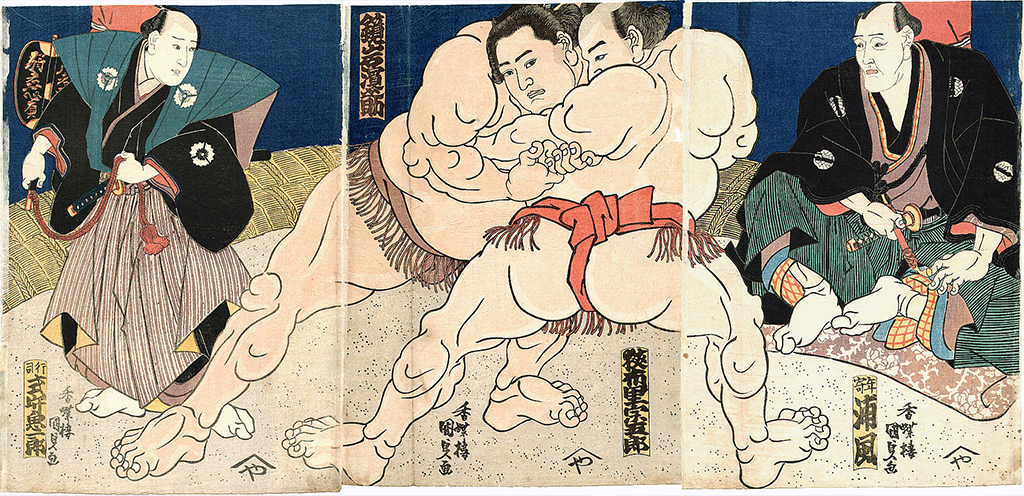
Sumo wrestling dates back to the Edo period.
Are sumo wrestlers healthy?
Sumo wrestling is the kind of sport that the size of athletes is considered a privilege. Therefore, Sumo wrestlers always try to get as big and heavy as possible, particularly from 300 to 400 pounds. They do look like they are obese BUT they don’t. The difference is the level of visceral fat, an extra fat laid most in the abdomen, and around the essential organs like the liver or pancreas.
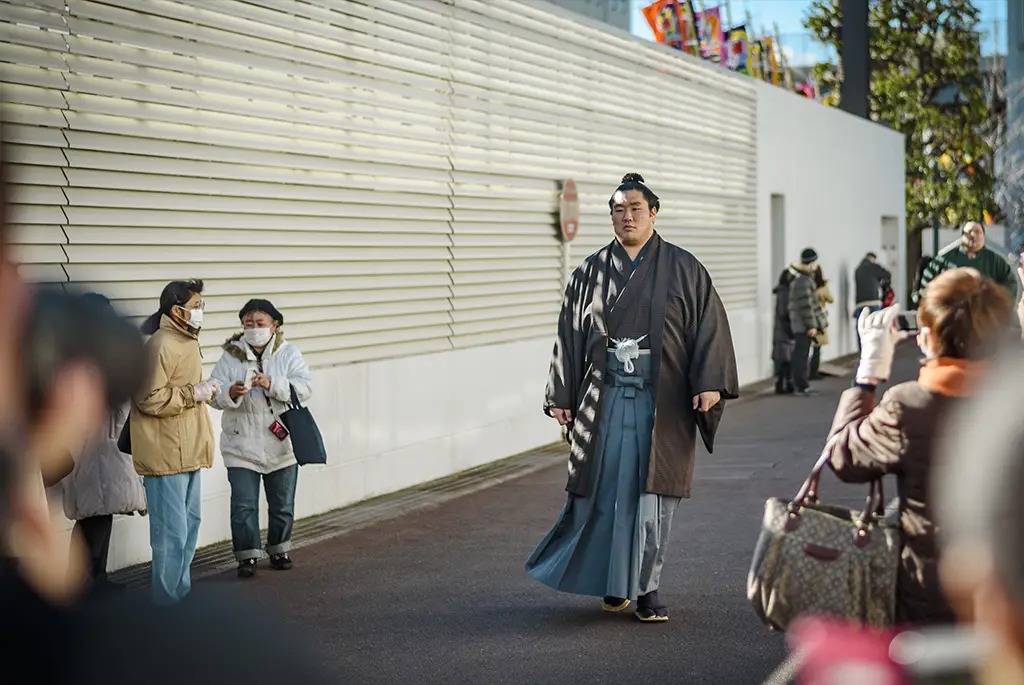
Sumo is usually much bigger and heavier than normal people.
On the one hand, there is a lot of visceral fat in the body of people with obesity. This highly active fat occupies the blood with molecules which results in inflammation. The consequences are some dangerous health issues ranging from high blood pressure, Type 2 diabetes, heart attacks, and other cardiovascular ailments.
On the other hand, thanks to CT scans, scientists find out that sumo wrestlers’ bodies don’t have much visceral fat. Besides, most of this fat is stored right under their skin so it doesn’t affect the blood circulation at all. If there is any type of fat in sumo wrestlers’ blood, it is triglycerides. However, the amount is strictly controlled under an appropriate level like a normal person. In fact, sumo wrestlers are also blessed with a small volume of cholesterol. Therefore, they escape all the diseases related to obesity like heart attack and stroke.
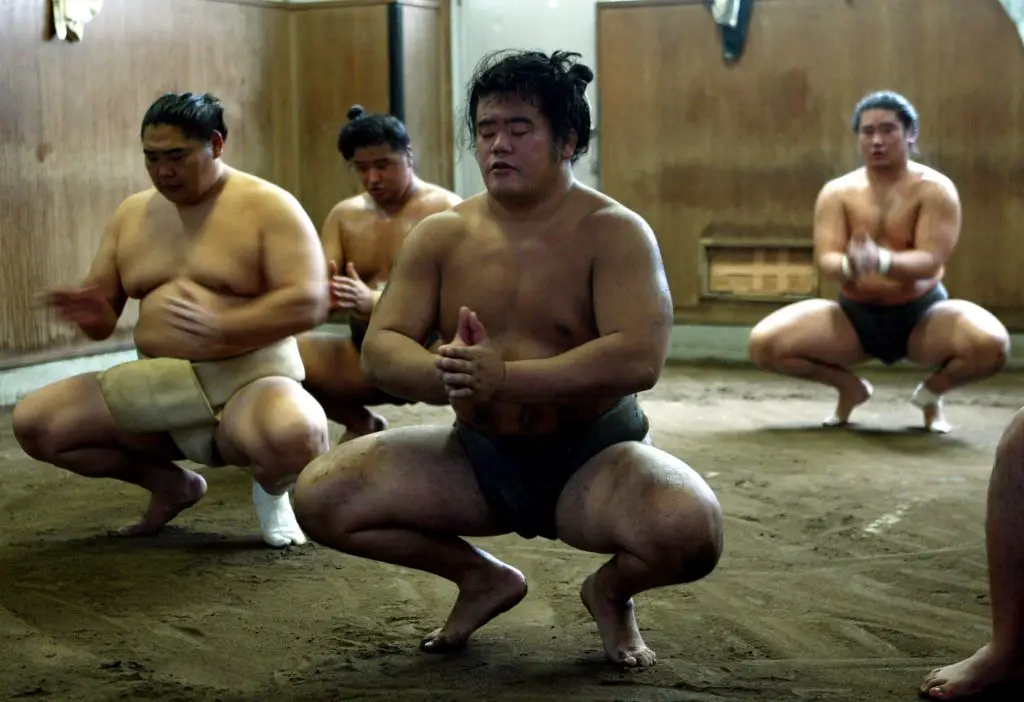
Sumo wrestlers are indeed strong and healthy.
Now, the answer to the question “Are sumo wrestlers healthy?” is clear. Here comes another tough question “How can they do that?”. Being over 300 pounds and still healthy is not a joke. Sumo wrestlers achieve this through a distinctive method of gaining weight. The first factor is their diet.
Sumo wrestler special diet
Chankonabe
The weight of over 300 pounds requires a high-calorie intake. Hence the rikishi consumes around 7000 to 10000 calories in a day. This can be done by eating a dish called chankonabe which is the main food for rikishi. Chankonabe is basically a hot served soup rich in nutrients such as vital minerals, proteins, vitamins, and increases the eater’s weight as well.
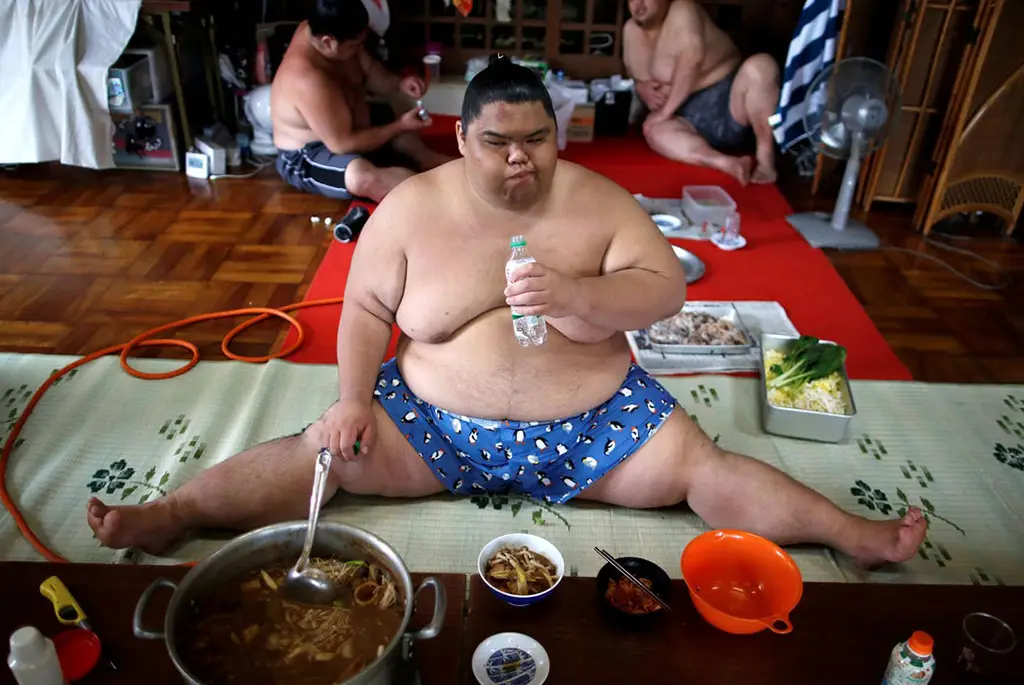
A sumo wrestler can eat up to 10 bowls of Chankonabe.
Although there is no fixed recipe to cook Chankonabe, this dish can not miss a kind of protein like chicken, beef, fish, pork, or tofu. Vegetables are also indispensable. Some ex-sumo wrestlers reveal their favorite are potatoes, mushrooms, radishes, cabbage, and others. A sumo wrestler can eat ten bowls of this broth together with rice or noodles.
Watch the following video the know how a professional sumo wrestler prepare his Chankonabe
Rice and noodles
In order to get even more calories, sumo wrestlers need a lot of rice and noodles as parts of their daily meals. Not just one or two bowls but a large portion will create extra pounds along with the competitive edge for the rikishi.
Chicken
On the match days, the traditional chankonabe is usually served with chicken. Sumo wrestlers believe this will them good luck as chicken only walks with two feet on the ground. And do you remember that it is the same rule to win in sumo wrestling?
Water and beer
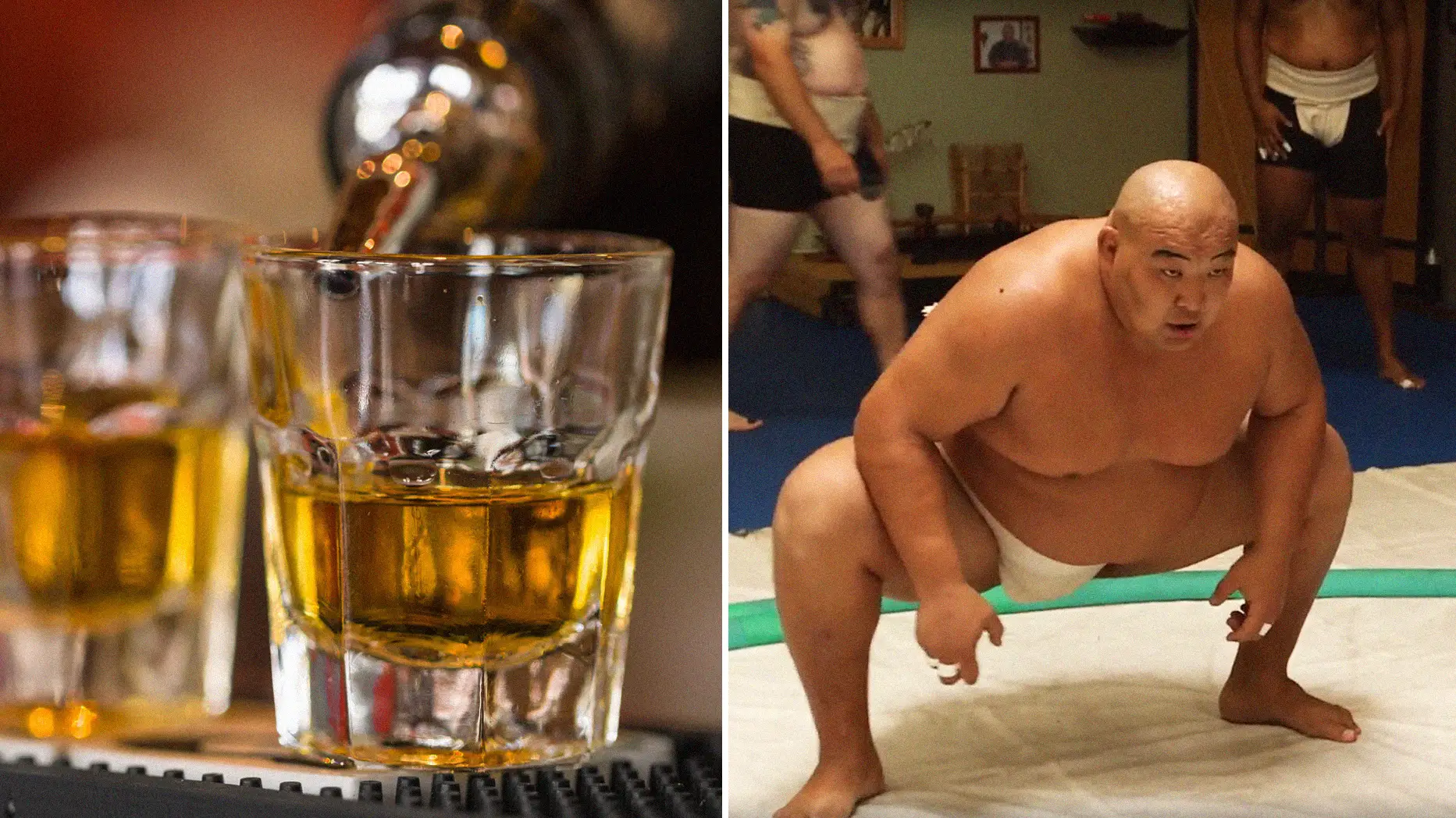
Sumo wrestlers drink a lot of beers.
Hydration is quite obvious here. After training sessions, sumo wrestlers normally wear out and need to be supplied with water. Sometimes, they replace water with green tea and beer. Beer is definitely one of Japanese favourite drinks as it makes food tastier.
Sumo wrestler eating habits
Sumo wrestlers skip breakfast. Instead, they head straight into training, and not until noon do they have a feast. The reason is being full while doing such intense exercises will cause abdominal issues. Then, the wrestlers will have a 4-hour nap. This instant sleep is important because it turns your food into pure, dimpled fat. When they wake up, they eat their second and last meal of the day at around 8-10 pm.
Sumo wrestler vigorous training and exercise
Research indicates that extreme exercise may raise the amount of adiponectin. This hormone helps not only stop the spread of visceral fat but also leads the glucose out of the bloodstream. This fat ends up underneath the skin.
That is the key secret of sumo wrestlers. At their stable in Japan, they wake up from 5 am and start doing hard chores right away. Mind you, these exercises are nowhere near what you get at a normal fitness class. For instance, sumo wrestlers may do butsukari-geiko, in which they punch and force each other until becoming drained. Furthermore, the match itself is gruesome and exhausting training that the sumo wrestlers have to undertake regularly.
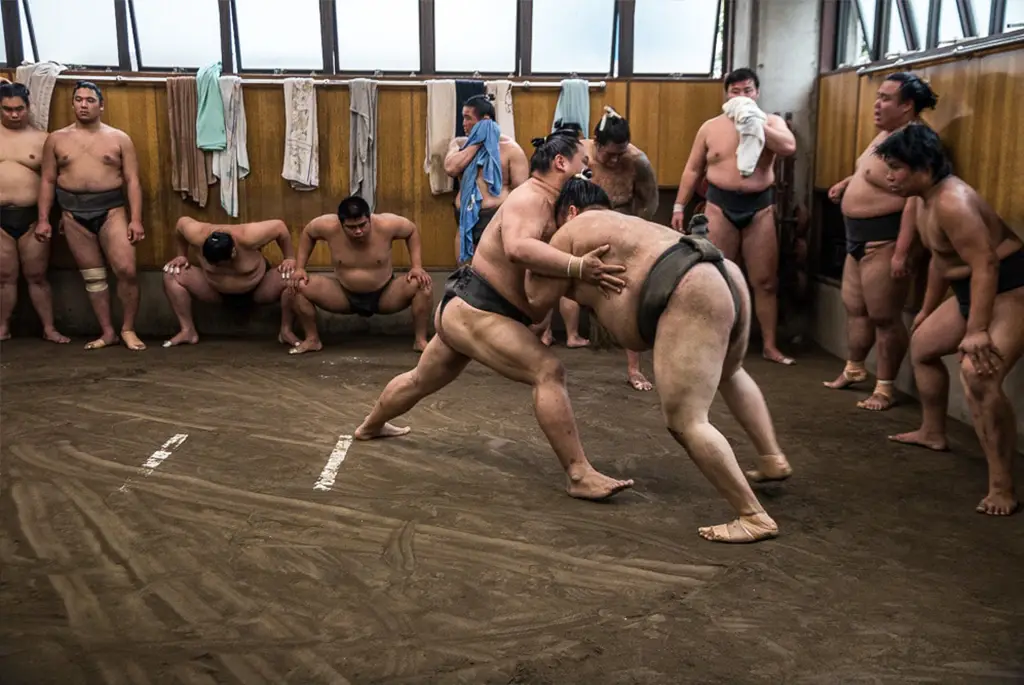
Sumo wrestlers join the training in the stables every day.
All these workout means the weight of sumo wrestlers is formed equally throughout the bodies not just the belly area like others. Above all, sumo wrestlers find their bon appetite after physically demanding chores. They basically eat more, exercise more, and gain weight more.
FAQs:
1. Are sumo wrestlers unhealthy?
As we mentioned above, sumo wrestlers do not have the symptom or any health issues related to obesity. They are indeed very strong. But some may experience knee problems in the long term as the extreme weight puts more pressure on your knee.
2. How long do sumo wrestlers live for?
Sumo wrestlers are commonly expected to live into their 60s and early 70s, up to 15 years shorter than the average life expectancy of the Japanese male. It seems that the sumo life has done quite a damage on the wrestler’s body. But the direct harm doesn’t arrive until retirement. I will explain it later in the next question
3. Do sumo wrestlers lose weight when they retire?
The average weight sumo wrestlers lose after they retire is between 30 and 40 pounds. The heaviest wrestler ever in sumo, “Meet Ball” Konishiki relies on surgery to lose 100 pounds and it is officially the record for the dramatic change.
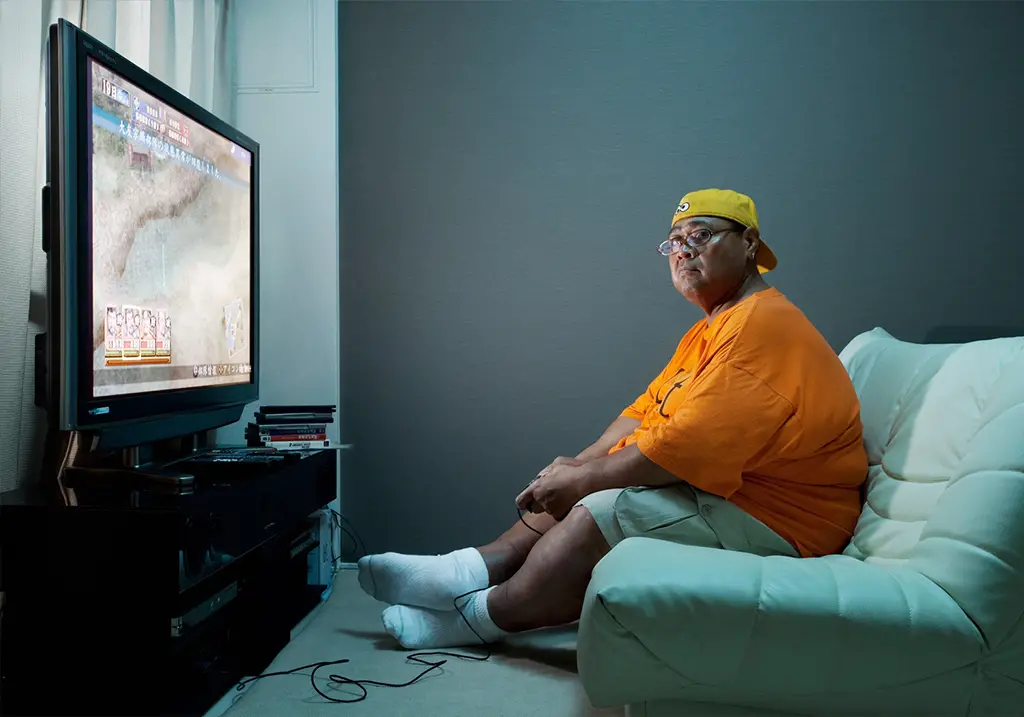
Konishiki lost 100 pounds after retirement.
Even though Sumo wrestlers cut 10k+ calories every day, they also stop working out hard. This leads to severe effects. All the diseases involving obesity will be activated and the more heavyweight you used to be, the larger scares sumo career leaves on your health. That is why sumo wrestlers are usually short-lived.
4. How do sumo wrestlers get so big?
Chanko-nabe, rice, and noodles are the fundamental fuels for the wrestlers and they eat a lot of these. They are heavy beer drinkers as well. This diet build up fat and sleeping habits help them store fat. Besides, intense training and competition all around the year create a lot of muscle.

